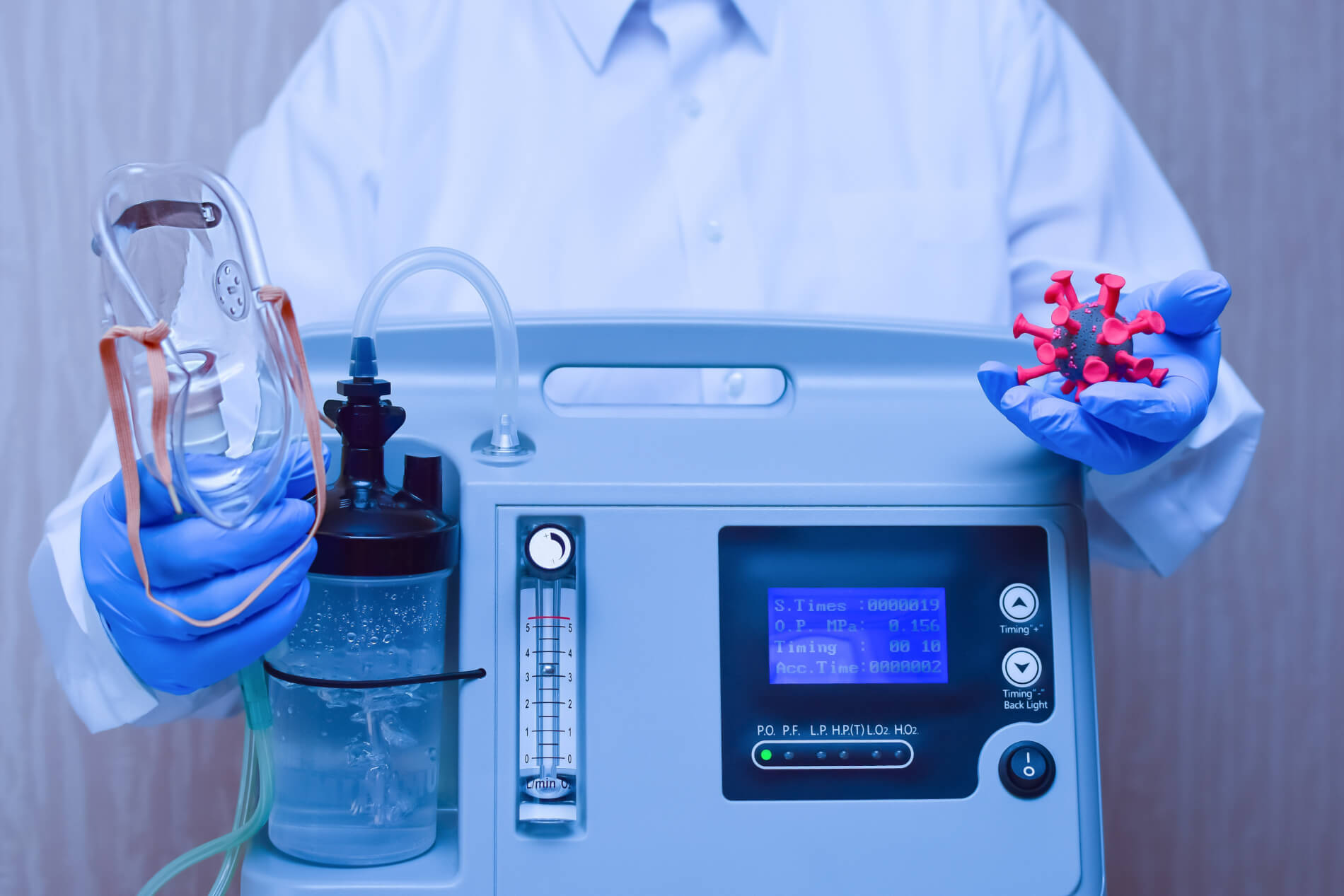Enabling the Future of Oxygen Concentrator Procurement

The second wave crisis of COVID-19 in India has sparked the need for oxygen concentrator procurement to meet the shortage of oxygen supply across the health continuum. The demand for concentrators has increased from 40,000 per year to 30,000–40,000 per month. If your NGO or resident’s welfare association (RWA) is looking for reliable oxygen concentrator procurement solutions, we have got you covered.
Why Should Your RWA and NGO Procure Oxygen Concentrators?
As patients battle for bed and medical oxygen supply, oxygen concentrators can play a significant role in moderate and extreme in-home/clinic treatment. Usage of these concentrators can ease the strain on hospitals while providing patients with a much-needed window to plan their medical treatment.
What Are the Benefits of an Oxygen Concentrator Bank?
An Oxygen Concentrator Bank or a streamlined oxygen refilling bank with a standardized operating procedure covering clinical guidelines will be beneficial to smoothen the collection and distribution of oxygen concentrators. It will be an efficient service that can be initiated by the local authorities to help thousands of families in distress and urgently need oxygen.
It will eventually help balance the demand and procurement ratio so that enough oxygen is available to overcome the prevailing demand of hospitals and residents. How can you create an oxygen concentrator bank for your RWA and NGO?
Here are five tips on oxygen concentrator procurement for NGOs and RWAs.
1. When to use oxygen concentrators?
Oxygen concentrators can only be used in mild cases of COVID-19 when the patient’s oxygen levels are dropping and the oxygen requirement is at a maximum of 5 liters per minute. Use an oxygen concentrator only for mild and moderate cases when oxygen saturation is >90%.
Patients with mild COVID-19-induced pneumonia with an oxygen saturation of less than 94 will benefit from extra oxygen administered by an oxygen concentrator, but only before the need for hospitalization arises.
You are not at risk of oxygen poisoning if you follow your doctor’s professional judgment in your oxygen therapy.
2. What should be the order size?
Keep 1%–2% of community strength as the number of oxygen concentrators required. The appointment of police officials and managers to coordinate with the RWAs for the smooth working of the oxygen cylinder bank should be the critical point of the SOP.
Each specified official should be responsible for a specific task to ensure the delivery of the refilled cylinder to the deserving family or candidate, getting the cylinder back when the need for refilling is over, then allocating it to the NGOs and RWAs.
3. How to ensure equitable distribution?
Local authorities should accept all types of oxygen concentrators and cylinders from residents. The refilled oxygen concentrators and cylinders should be given to respective NGOs and RWAs to further lend them for a few days as per the need.
The usage terms to borrow a concentrator for 3–7 days should be part of the SOPs. Moreover, NGOs and RWAs should receive refilled cylinders within 24 to 48 hours, which will help to deal with critical patients in a decentralized manner. The division of specific time slots to procure an oxygen cylinder, collect empty cylinders, send to refill, and allocate a filled cylinder will create an efficient distribution system. A special team can parallelly procure oxygen and collect medical documents and carefully check the prescription of the person needing it to validate the demand.
Additionally, volunteers can help organize home quarantine programs, mental health counseling services, a volunteer SOS task group, insurance coverage, and a COVID support fund for the COVID warriors and workers who keep the vital supply chain going.
4. How to ensure safety and hygiene rules?
Ask the oxygen cylinder suppliers to sanitize and hold back used oxygen concentrators 24 hours before subsequent use. Check for the flow rate capabilities of the oxygen concentrator before distribution so that high and low flow rate concentrators can be collected and distributed separately.
With the help of local government officials, senior colleagues, and administrators, create an oxygen guideline. The SOP should include a training scheme for physicians, nurses, and other oxygen users—implementing the agreed-upon hospital strategy and creating dosage and patient observation sheets to help standardize oxygen therapy.
5. How to track and trace orders and deliveries?
Ask for a dedicated resource for your community from the supplier to act as a single point of contact. Coordinating with the oxygen cylinder bank, oxygen concentrator suppliers and a collaborative effort to make different zones within the specific area for refilling the cylinders will help reach the required facility on time.
With these tips, NGOs and RWAs can make the procurement and distribution of oxygen concentrators efficient. The oxygen supply chain workers and the NGOs and RWAs looking for oxygen cylinder procurement should consider the following points:
- Check for the power consumption, warranty, size, and portability of the oxygen concentrator. The noise level should be between 40 and 58 decibels.
- Avoid being close to open flames while using an oxygen concentrator or tank. Keep a distance of at least 10 feet from open flames. Ensure that cigarettes, lamps, and gas stoves are out of reach.
- When using oxygen treatment, avoid using an electric razor; they have a knack for spitting sparks.
- When using supplemental oxygen, avoid putting on or taking off clothing that is vulnerable to static electricity.
- Since oil- and petroleum-based materials are flammable, please do not use them on the face while using oxygen.
Please contact us at info@moglixbusiness.com if your NGO or residents’ welfare association is looking for oxygen concentrator procurement solutions. We can assist you in establishing comparable group-sharing models for your local community and share our expertise and SOPs with you. Let us collaborate now to make a difference in people’s lives! Contact Us
